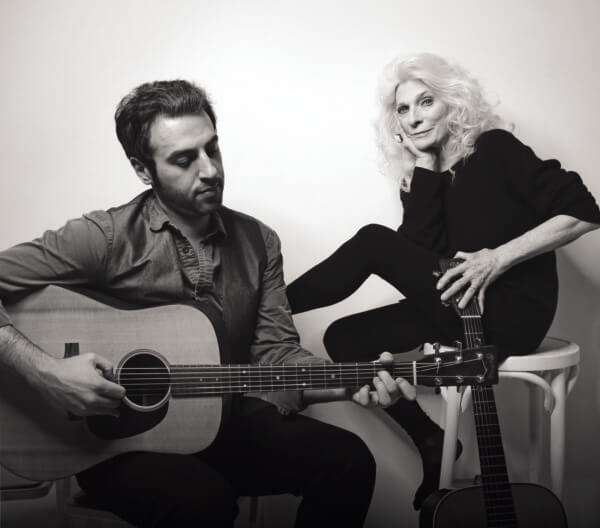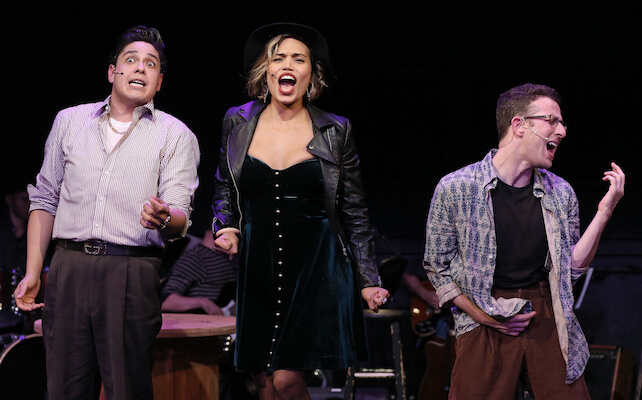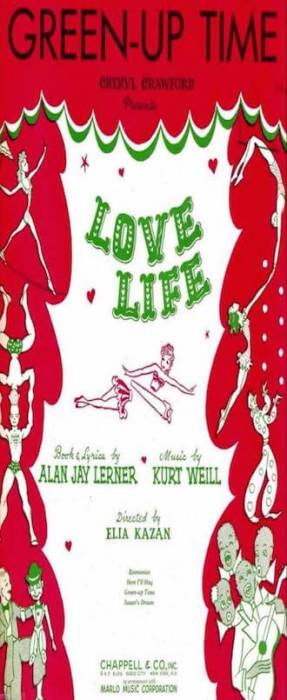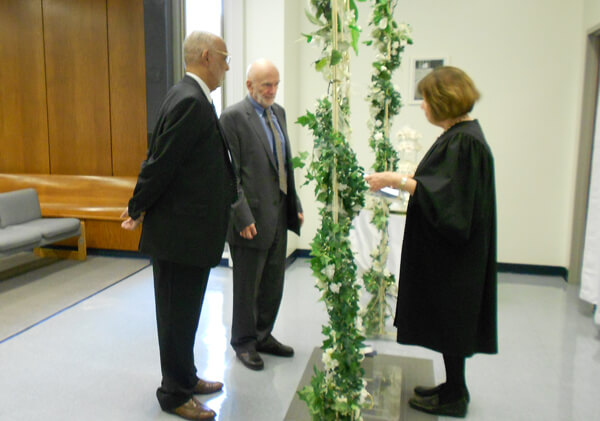In my circle, the most hotly anticipated show of the holiday season is Transport Group’s “Once Upon a Mattress,” with a cast that includes Jackie Hoffman, John Epperson (aka Lypsinka), Jack Donahue, Jason SweetTooth Williams, Jay Rogers, David Greenspan, and Hunter Ryan Herdlicka. I traveled down to the historic Henry Street Settlement to meet up with Herdlicka, who not only knows all the good places to hang out in that nabe, but also all about the show itself (Abrons Arts Center, 466 Grand St., btwn. Pitt & Willett Sts., through Jan. 3; transportgroup.org).
“I play the Minstrel,” he explained, “who is kind of the narrator of the story. He opens the show with a song called ‘Many Moons Ago,’ and I basically come out and sing a version of ‘The Princess and the Pea,” because ‘Once’ is a retelling of it, and then I say, ‘Wait, that’s not the real story. This is it!’
“When they wrote the show, they set the Minstrel up to be a narrator throughout the show, but what they ended up with was about three spots of narration. It’s like they got sick of it in Act Two and gave me another story, so it feels like an out of town doctor came in and fixed it up, saying, ‘No more narration: you need book scenes and solos and duets!’
Hunter Ryan Herdlicka’s “Little Night Music” gig days after leaving college; Mel Odom’s far longer slog to solo show
“It’s a nice part, and the show is really an ensemble piece, with nine principles in a cast of 14. Surprisingly, there’s a lot of dancing on this small stage. Transport did a reading of this about two years ago with Jackie, as a kind of benefit in front of [“Mattress” composer] Mary Rodgers, who went gaga-googoo for it. Just before she passed away, our director, Jack Cummings, had a meeting with her, and she even left us some money to make it happen because she believed in it so strongly. She loved Lypsinka and the idea of Jackie playing Princess Winnifred. One would never have thought of her because Jackie’s older, quirky-sounding and looking, and an underdog, but that’s really the part. She’s not married and not 19 either, and shows up in this kingdom, ‘Hey, I heard you had an opening for a princess, so let’s go!’”
With no small amount of excitement, Herdlicka added, “There’s word about doing a cast album. Our theater has an old-fashioned proscenium, not just a black box. We have a 12-piece orchestra — we only had nine pieces on Broadway for ‘A Little Night Music,’ and that’s an operetta! We have gorgeous new orchestrations, and the score is such an old-fashioned delight. It reminds me of ‘How to Succeed in Business’: beautiful melodies, big brassy show-stopping musicals, with genius lyrics by Marshall Barer.”
Landing the role of Henrik in the 2010 revival of “A Little Night Music” was, for Herdlicka, beyond a dream come true. After graduating from Carnegie Mellon in Pittsburgh, he had two weeks off before going to a summer stock job. Against the advice of his family, who wanted him to save his money and come home to Dallas, he packed up his jeep and drove to New York, where he got a sublet. His agency called with the audition for “A Little Night Music,” which he did, thinking he’d never get it. But he was called back and, on that day, found himself in the same elevator as Stephen Sondheim, whom he’d idolized since he was nine.
“When I realized who that man standing next to me was, I pulled my iPod out of my ears. We stood there in silence, until I blurted out, ‘I’m Hunter. I’m here to sing for you!’ He turns to me, pauses, and says, ‘I’m here to listen to you.’ [Director] Trevor Nunn meets me at the door with a trillion people around and introduces me to everyone until he gets to Stephen, who looks up from his New York Post and says, ‘Oh, we go way back,’ which really surprised Trevor.
“I sang Henrik’s song ‘Later,’ and ‘A Weekend in the Country,’ and Stephen was laughing throughout the first song, making me think ‘Oh, it’s a funny song.’ My agent calls me the next day, ‘You have to come in and sign your contract for West Virginia Public Theater.’ So I went in and signed it, and then he says, ‘How would you like to play Henrik in ‘A Little Night Music’? You got the job!’ I started crying, and so did everybody else.”
Flash forward several months later: “We were going to close and one day, I’m at lunch and read an online announcement that we’re being extended, and Bernadette Peters and Elaine Stritch are replacing Catherine Zeta-Jones and Angela Lansbury. I went running back, ‘Did you all hear?’ Aaron Lazar was like, ‘No! What? What, dude?’ They didn’t even know that my two other all-time idols joined the show.”
I told Herdlicka that, for me, Alexander Hanson, as lawyer Egerman, was the real cast stand-out, providing the show with an emotional through-line and a real, romantically beating heart. Herdlicka concurred.
“Wasn’t he great?,” he said. “So underrated, and it was disgusting that the Tony committee ignored him for a nomination. He was just the driving force in that show, so good and subtle, and emotionally connected every night. He had already played it in two different theaters in England and had also done Henrik, so he wasn’t all fresh and excited about it in a country where he didn’t know anyone and no one knew him. But he was perfect in every way, although the women grabbed all the attention.
“Catherine was really lovely but it was hard, because during the run she was diagnosed as bipolar. That was when the symptoms set in, plus the stress of moving to the city, raising her kids, her husband [Michael Douglas] getting the cancer diagnosis, her stepson [Cameron Douglas] being sent back to prison. I think carrying a Broadway show for the first time, fresh from Hollywood to win the Tony and prove herself, was a lot to carry. And then, to have to wake up and do ‘Good Morning America’ on a two-show day to prove herself. She was overworked. It was hard, but she was generous, always brought us gifts. Oh my God!
“People always thought she was drinking because her personality did change. It was different. She was really battling something, and I don’t think she knew at the time what it was. Even when she left, there was a thing on ‘Oprah’ where she checked into a clinic. I come from a family where mental illness is prevalent and I thought, ‘Guys, she’s not drunk. This is bipolar.’
“Angela Lansbury was just a dream, always had her dressing room door open, and Bernadette was the same warm , friendly, never a mean moment or word, flawless. And so gorgeous — all you wanna do is stare at her body, face, and hair. If I was a woman I’d wanna look like her. Hell, I want to be her!
“And Elaine was Elaine. It was only toward the end of the run that we really latched on to one another. I didn’t really seek it out because I was pretty intimidated by her, never knew what was gonna happen. We had closed in January, and I called in February. It was her birthday: ‘Elaine, it’s Hunter.’
“‘Who? Hunter who?’ ‘Later’ was her nickname for me. ‘Oh God, Later, dammit why didn’t you tell where the hell you have you been. We’ve been closed a month and you never called!’
“‘Well, I didn’t want to bug you.’
“‘Bug me? I’m living in a fucking hotel, and I’m bored out of my mind! Come over, let’s go out!’ A week later, we had dinner and had the greatest time ever. And then it became a regular thing and I talked to her every afternoon. At her very last show at the Carlyle, I helped her through whole thing and she put me in the show to create an audience interactive thing together. If her memory started to go during one of the stories, I’d help her back into it. It was the strongest bond I’ve ever had with another person. I helped her move to Birmingham, Michigan, where she died. I packed all her boxes myself.“I happened to be doing a workshop in Chicago for a week when I found out she’d died and, ‘Ohmigod, I can’t go to the funeral. I have to work in Chicago, trapped for a week, and why do we have a day off on Thursday, we should just get this over with.’
“Sure enough, her family calls: ‘Hunter, you’re probably working and can’t make it but the funeral’s being held in Chicago on Thursday. And I’m in Chicago on the day off I’ve been fighting about. So I called a car and drove 30 miles to the funeral.
“She always called me ‘Later,’ and one day she was yelling at me in Birdland: ‘I’ve been trying to get your attention!’
“‘Well, who answers to that name?’ I said, ‘Call me Hunter!’ And she said, ‘I’m gonna put that on my tombstone: “Elaine Stritch. Later.”’
“So I go to the funeral, and am trying to hold it all together when I see her tombstone and it says ‘Elaine Stritch Bay. Later.’ I looked down and I’m just in shock, and then somebody from the family, says, ‘Oh, funny, huh? We don’t know what she was talking about, but that’s what she wanted.’ Every time I think about it, I’m still in shock.”
“Night Music” also gave Herdlicka a chance to become close with Sondheim.
“Trevor was really set in his way about what he wanted, so Sondheim wasn’t around much backstage. The only note I ever got from him was during a daytime session. ‘Hunter, ’I’ve been thinking,’ he said, as he looked up from his crossword puzzle. ‘The lyrics for “Later” are, “Oh, yes, the lawyer’s son is short and boring. He’s hardly worth ignoring.” You’re not short, so I think we gotta change it. You like bland? How about that?’
“‘Bland and boring! That’s pretty great! I like the alliteration!’ I said.
“‘It’s not that you’re bland, it’s that you’re not short,’ he said. ‘So, put it in the show tonight so that I’ll see how I like it.’ So I got to inspire a Sondheim lyric change!
“He was a strong supporter and cheerleader for me. I just went to his birthday party last year. It’s very small and private, at Lincoln restaurant. There was Bernadette, Phyllis Newman, Oskar Eustis, Mia Farrow. No Patti LuPone, not a lot of big stars but major industry people that control New York. That was really special.”
Herdlicka talked about being gay and how surprised he is at the changes in attitudes about homosexuality in Texas from when he grew up there.
“I was not out until I went to school, had to get out of home life. Ten years ago wasn’t the time it is now. But now when I go home, there are out people everywhere and being gay is a non–issue. When I went to high school, there were 2,000 kids and one was out and he was out because he was kicked out of another school for being gay. It was a national news story, and now when I visit, they say, ‘Yeah, we have a gay-straight alliance that has 35 members. Just between you and me, the gay-straight alliance is not always the coolest kids, so there are more out people than that.’
“I asked them if they were ever nervous about being called gay or fag? Absolutely not. And the jocks don’t pick on effeminate people or lesbians. It started to change in Texas from just last year. My grandparents are 80 years old and are now thinking in an entirely different way.”
Ever since his first 1970s illustrations for magazines like that seminal gay milestone Blueboy, the lush, brilliantly rendered art of Mel Odom has, for me, always been a beautiful and strong comment on — and inspired vision of — not just our gay history, but our deepest personal lives, as well.
This uber-sensitive, intelligent, and witty visual magician is finally having his first one-man show, “Secrets Gardens,” running through January 8, at Portraits, Inc. (6 E. 92nd St., reception, Dec. 10, 6-8 p.m.; portraitsinc.com). There are 33 exquisitely, painstakingly wrought paintings, and Odom’s lifelong obsession with dolls are what propels the show — with a daring mix of Ingres classic perfection and zeitgeist-y imagery stamped upon the placid porcelain faces of the featured poppets.
I met Odom in the West Side apartment where he has long resided, which I’ll just refer to as Magic Land, if only for a doll room, watched over by a magnificent poster of Hedy Lamarr, that is pure nirvana. Prominent among the populace displayed are the always sumptuously gorgeous versions of the doll Odom invented, Gene, the very personification of high 1940s glam and insolent sexiness. Almost universally considered the most beautiful and special doll on the market today, the charismatic fantasy movie-star-in-resin sports the greatest wardrobe since Bette Davis in “Mr. Skeffington.” Odom’s favorite movie star, that irresistible bucktoothed beauty Gene Tierney, was the inspiration for her namesake doll.
The elegantly accoutered Gene has obsessed fans and customers who gather at Gene conventions held across the country. There, a full-on celebration of all things doll-like brings many men for whom such an event is a joyously independent rebuke to their oppressed and persecuted days as young “sissies,” which often began with the discovery of their affinity for this girl’s toy.
The chance encounters are often intense: “I went to a signing in Greensboro, North Carolina, which is my home state, so it’s already emotional. People were telling me, ‘I love Gene so much and this one looks so much like my mother in her wedding gown. Thank you for making it so unique!’
“This one woman told me that her husband wanted to speak to me, although she had no idea what he was going to say. Well, this big buzz-cut Marine comes over and I’m thinking he’s gonna punch me for all the money she’s spent on Gene. But he said, ‘You know, I have to go away a lot for months at a time and I carry this doll with me, because she looks like my wife. I keep it with me all the time.’
“I started crying, and he continued, ‘And I know she has other wives of soldiers and they get together and play with their Gene dolls.’ This was way more than I ever expected from this. It was during the Enduring Freedom campaign in Iraq, I believe, and he gave me patches that soldiers were given to put on their uniforms. I said to him, ‘Sometimes, in this crazy world, I’ve wondered where I fit in and you’re the first clue. Something I do makes your life a little easier.’ And we became good friends. Last Christmas, he sent my husband, Charlie, and me Special Op jackets. I have never not been knocked out by people’s responses to me, this live person representing this doll they love. If you deal with Mattel, they’re all paid androids reading the same script.”
For years, Odom had been banging his head against New York art galleries, none of whom would carry his work, until now: “Growing up, art was my focus, and it was always my side thing in high school, which I wouldn’t go through again at gunpoint. But college was fun, and then I went to England for a couple years and studied there. I came back to Richmond, Virginia, and made a portfolio and then moved to New York in 1975. I don’t know if it could happen today, but I got the name of a an illustration agent, found her number in the book, called, and went over that day. She lived in the Village and signed me on the spot.
“I went back to Richmond, and she called me two weeks later: ‘You have a job with Viva magazine, who’s paying $300. I packed up and moved the next day. Blueboy saw me in Viva, and then Playboy saw my work there, and then Time saw my work in Playboy. So it was a real nice succession of climbing, like Barbara Stanwyck in ‘Baby Face!’ [laughs].
“Playboy was the best gig I ever had. They never said, ‘This is too homoerotic,’ but were really cool and really bohemian, even though it was a big corporate magazine. A huge budget, and they really believed in the freedom they were espousing. I liked Hefner’s daughter, Christy, but I never met him. I did send him a Gene doll, the one that looked the most like Gene Tierney. And he sent me that nice letter you were reading” on his wall.
Odom recalled knowing he was gay “as far back as I can remember. My parents found out in a letter written to a boyfriend when I was in college and they were not thrilled because they thought I would be really unhappy. Dad was okay with me playing with dolls, and all my older cousins were girls, so the toys I inherited were dolls. It was in the cards from the beginning, my friend, and I was thrilled. They saw me being okay with it and what happened when they wanted to send me to a psychiatrist and I said, ‘Well, I’m mot going to do that because I don’t need it and you can be happy for me because I’m not going to be miserable for you.’”
Odom was positively glowing with excitement about this new, long overdue phase in his career.
“I’ve been very blessed in my career, and this show is just more of that. You’ve got to reinvent yourself. I’m good for 20 years, and then I’m at the point where I want to move on. You get to the point where you’re being redundant, and I’m so happy this gallery is cooperating with me!”




































